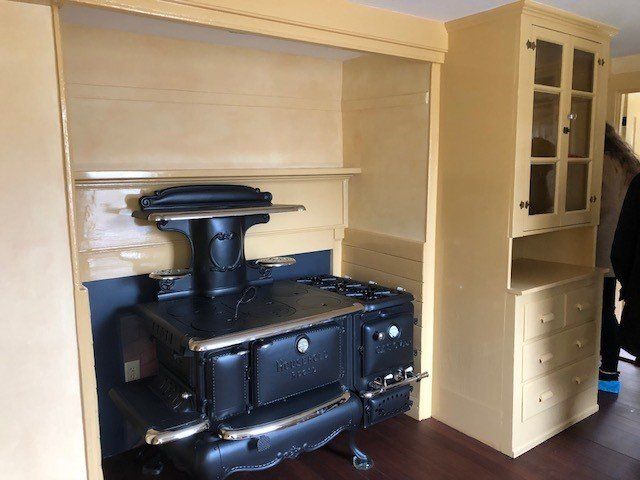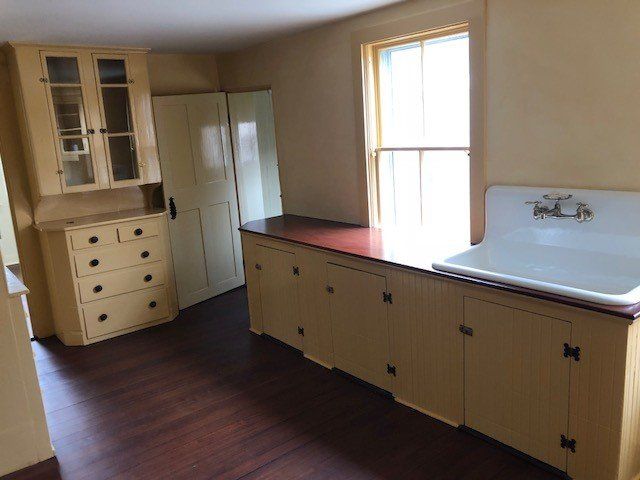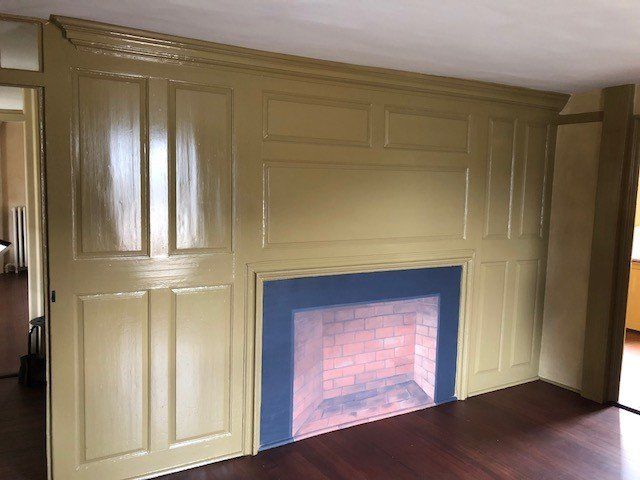Dream Kitchen!
Ms. Florence’s Stove
Soon, we all will be able to have a more in-depth look at the Higginbotham House, owned by the Museum of African American History (MAAH) in Boston. This house is part of the complex on York Street that includes the African Meetinghouse. The MAAH has been working hard to conserve and restore Ms. Florence’s house, as well as the outbuildings associated with the property. On Nantucket today, we have lost most of these outbuildings that were once (and still can be) important components of the running of a household – and sometimes a home-run business or two.
The house may look a bit later nineteenth/early twentieth century but it actually was built sometime not long after 1774 when Seneca Boston purchased it. Seneca had been a slave and purchased this lot long before slavery was abolished in the Commonwealth. He and his wife, Thankful Micah, who was Wampanoag, would raise six children here including the famed Absalom Boston. Absalom would captain the all-black crewed whaleship the Industry and play a leading role in the integration of the island’s schools – and in building the Meetinghouse next door to his birthplace.
Ms. Florence purchased the property in the early twentieth century and would also purchase the Meetinghouse which would help to preserve it. The image you see here is post-restoration work. One room is believed to be largely in its eighteenth century condition but the rest of the house saw a renovation by Ms. Florence as she did take in boarders and wanted to accommodate such an arrangement. MAAH worked to keep the house mainly at Ms. Florence’s inhabitance. And from a preservation standpoint it is important to show the evolution of a house – not to always bring it back to what you “think” it looked like – even if based on testing. (The Mitchell House has a myriad of things that are late nineteenth century and very early twentieth century – before it became a museum and during Maria’s uncle’s family’s inhabitance of the House.)
Front sitting room likely in 18th century condition. Ms. Florence removed the chimney mass to make a full front staircase.
The room I show here is her kitchen – with her original re-built stove (it was in pieces in an outbuilding but she saved it!). My immediate reaction when I saw it – and the entire house –I’m moving in! This is my dream kitchen though my stove is a bit later – think the stove in the Connecticut house in “Christmas in Connecticut” or some of the stoves seen in several early Katherine Hepburn-Spencer Tracy films. The cabinets are wonderful, the sink and counters gorgeous. Now, if they’d let me cook in it and stay awhile.
Congratulations MAAH!
JNLF
Recent Posts







